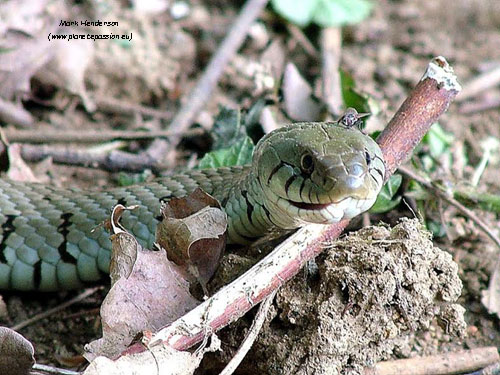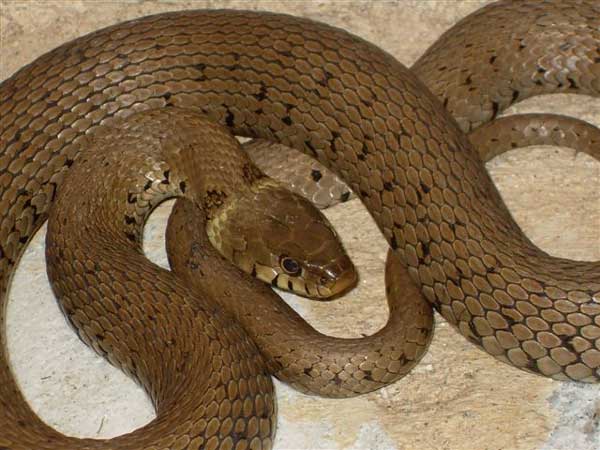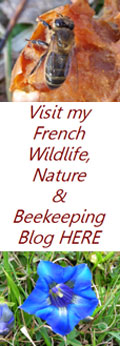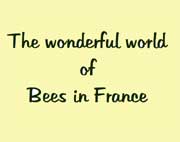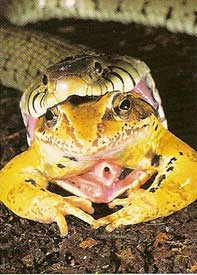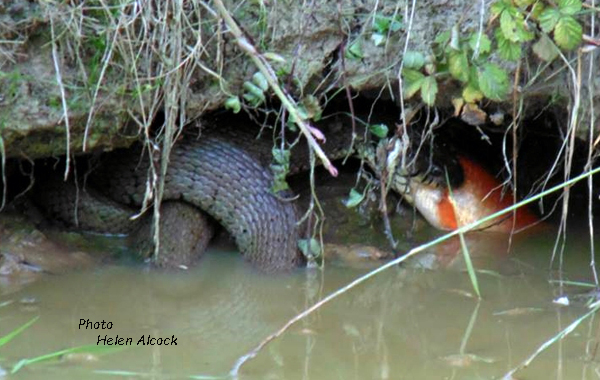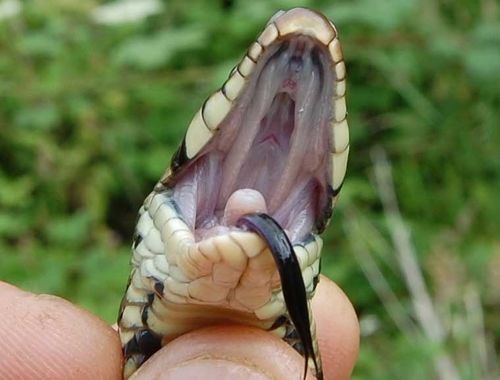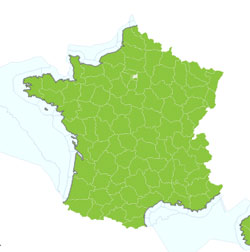Grass snake France
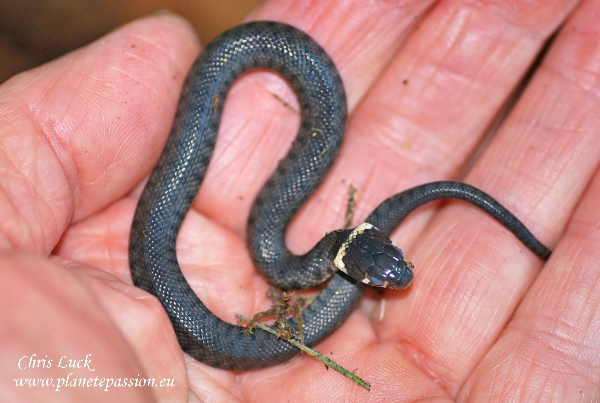

Grass snake
Natrix helvetica
Couleuvre helvétique
&
Natrix astreptophora
Couleuvre astreptophore
Generally simply referred to as Couleuvre à Collier.
In France there are two species of Grass snake, Natrix helvetica, (sometimes called the Swiss Grass snake), which is present everywhere in France and Natrix astreptophora, the Iberian Grass snake which is found in Ariége, Aude and Pyrénées-Orientales. These are distinct species that are genetically different - not sub species.
The grass snake gets its previous name in French from its characteristic collar which is formed by two half moon bands at the rear of its head, these can be yellow, white or cream in colour, although in some individuals this can be absent and may be less prominent with age. There is also a wide variation in body colouration, shades of grey/green with darker splashes or bands being most common, but some individuals can be all dark grey or black.
The females can grow with age into very large snakes, anything up to 2 metres, males may be 80cm with an average of 60cm.
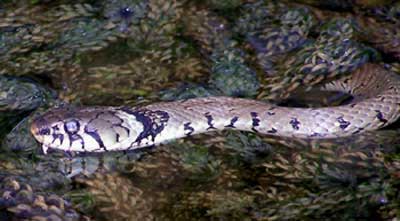
Photo. Grass snake, France.
They can be found all over France in all types of habitat, woodlands or open spaces, but with a preference for areas where water is present to some degree. They are quite happy to live alongside the vipére aspic. Thier preferred diet is frogs, lizards, newts and small fish and their larva and eggs; they will also prey on small mammals, voles etc. As can be seen in the pictures below they have the ability to swallow quite large prey whole.
Photo above - Grass snake eating a goldfish - Photo courtesy Helen Alcock
The grass snake has no venom fangs and is completely harmless but none the less can bluff convincingly by hissing loudly, puffing up its head and striking it hard against the perceived threat but rarely causing any harm, in fact its only real defence is to emit an unpleasant odour from its anal glands. Its last resort if cornered is to “play dead” often laying on its back with its head twisted or turned back, mouth open with tongue hanging out. These methods may work in its favour in certain instances but not against a serious predator!
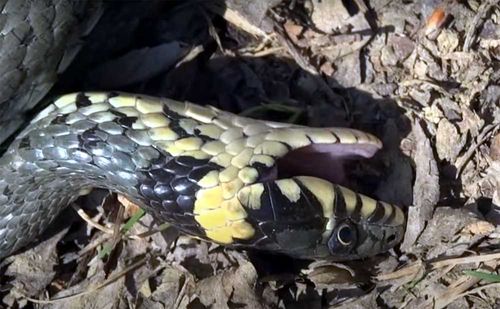
Photo: Grass snake playing dead, France
They are superb swimmers and can often be observed in lakes, ponds and rivers with their head held straight up out of the water; diving and swimming under water is another strong point being able to hold its breath for a good 20 minutes. They can also be seen from time to time in trees sunning themselves on low branches or in a trunk fork.
Hibernation takes place from September/October until March/April under a compost pile or other deep decomposing vegetal matter, a pile of rocks or in a rock fissure.
Coupling takes place in two distinct periods, the first just after coming out of hibernation and after the first “moult or skin shedding” (sloughing) in March/April and the other in the autumn just prior to hibernation. The period of coupling can bring together a large group of grass snakes in the same place - more males than females. Fertilisation takes place internally and it seems that females are able to “keep the male sperm” and decide according to conditions whether or not to fertilise themselves! Up to 50 eggs are laid always around the month of July inside a heap of compost, under a deep pile of leaves or in the base of a rotting tree stump. The young hatch after 4 to 8 weeks and are 15/20cm in length and having shed their skin in the first few days may go directly into hibernation.
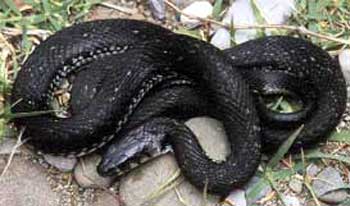
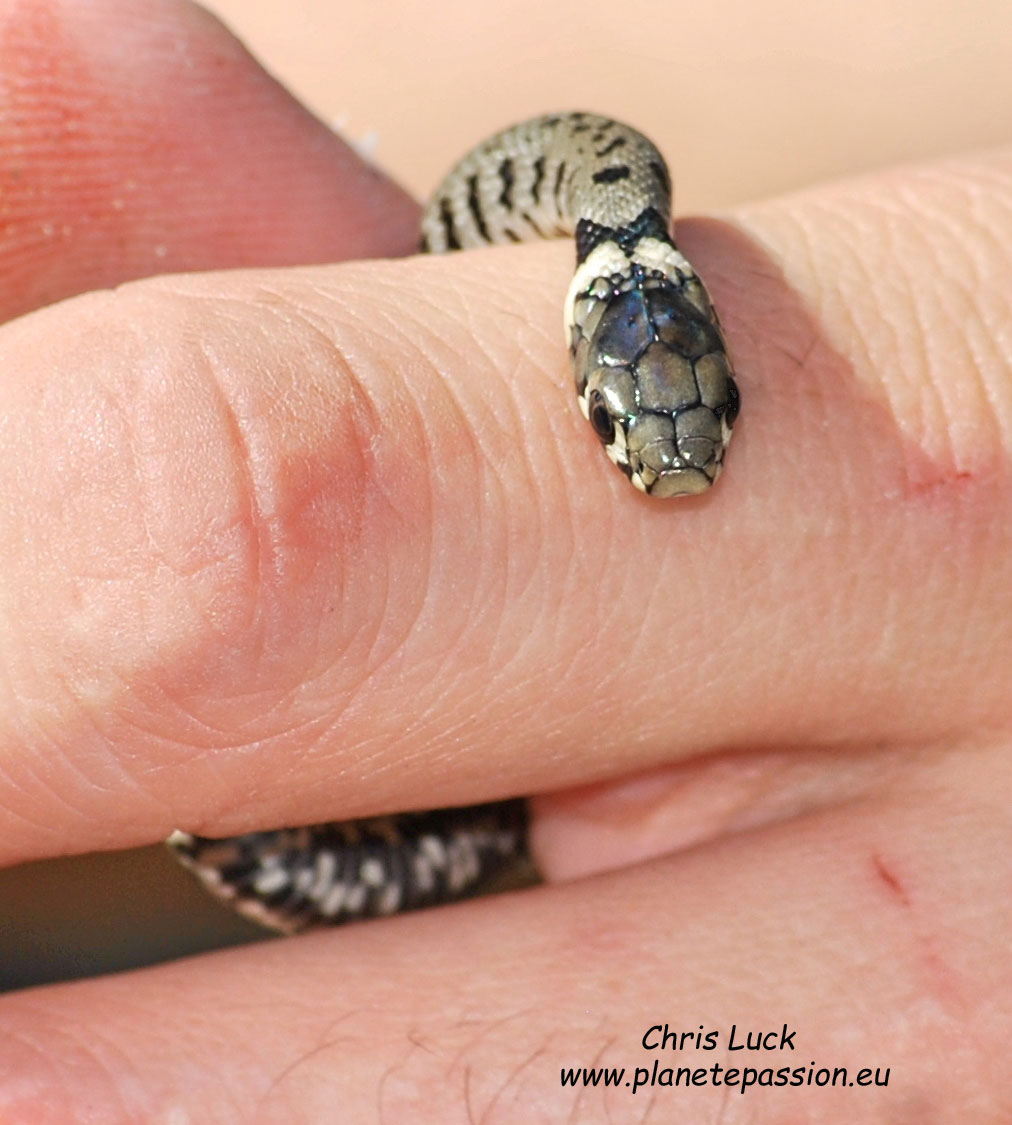
Photo above: Hatchling Grass snake, France

Photo above of a hatchling Grass snake of a few days old about to shed its skin for the first time as can be seen by the milky blue eyes.
Population: in decline.
NOT VENOMOUS
